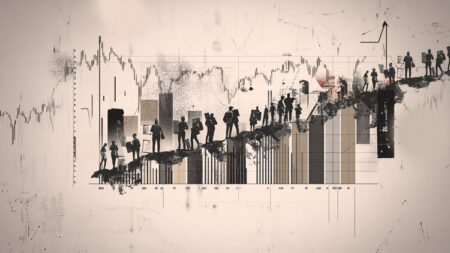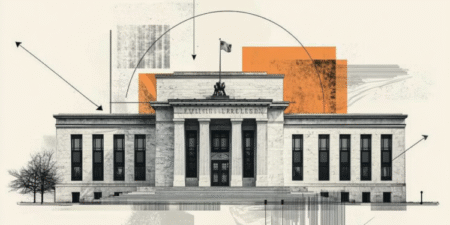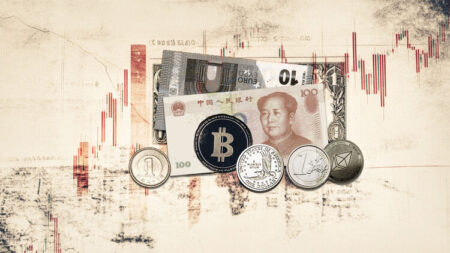- The Indian Rupee gives back half of its initial gains against the US Dollar, while the outlook remains firm amid upbeat market mood.
- Oil prices are likely to fall further if Israel and Iran keep to the truce.
- Fed’s Powell reiterates that the central bank needs more clarity on tariffs before reducing interest rates.
The Indian Rupee (INR) surrenders half of its initial gains against the US Dollar (USD) during the European trading session on Wednesday. The USD/INR pair rebounds to near 86.00 from a fresh weekly low around 85.80 posted earlier in the day. Still, the pair trades 0.06% higher from its previous day’s closing price and maintaining its four-day winning streak.
The outlook of the pair remains bearish on expectations that the Oil price could decline further, following confidence that both Israel and Iran will not violate the ceasefire agreement.
During European trading hours, the West Texas Intermediate (WTI) Oil price trades cautiously near an almost two-week low around $64.00.
Lower Oil price bodes well for currencies from nations that rely heavily on Oil imports to fulfil their energy needs, such as the Indian Rupee.
On Tuesday, United States (US) President Donald Trump stated in a post on Truth.Social that a truce between Israel and Iran has become effective and urged them not to violate. “The ceasefire is now in effect. Please do not violate it!” Trump wrote.
Meanwhile, the Indian equity market has extended their gains on lower Oil prices and improving investors’ risk appetite amid easing geopolitical tensions in the Middle East. At the press time, Nifty50 gains over 200 points higher to near 25,250, and Sensex30 jumps 0.87% above 82,772. On Tuesday, Foreign Institutional Investors (FIIs) sold equity worth Rs. 5,266.01 crores.
USD/INR is expected to face more downside as safe-haven demand of US Dollar diminishes
- Another trigger behind expectations of more downside in the USD/INR pair is weakness in the US Dollar as easing geopolitical tensions have forced traders to pare bullish bets in safe-haven assets. The US Dollar Index (DXY), which tracks the Greenback’s value against six major currencies, appears fragile near the weekly low around 98.00.
- The US currency struggles to gain ground even though Federal Reserve (Fed) Chair Jerome Powell has signaled in the semi-annual testimony before the US House Financial Services Committee on Tuesday that he will not endorse interest rate cuts in the July policy meeting.
- Powell stated the central bank needs more time to “assess the impact of still-unresolved tariff rates on inflation and growth”. He guided that the “impact of the new trade policy will be reflected in the June and July data”.
- Jerome Powell didn’t rule out the scenario that the impact of new international policies could be “one-time” on inflation. He stated that the central bank will “bring interest rates down sooner if officials find price pressures well contained”.
- Contrary to Jerome Powell’s ‘wait-and-see’ approach, Fed officials: Vice Chair Michelle Bowman, Governor Christopher Waller, and Chicago Fed President Austan Goolsbee have expressed confidence that the impact of tariffs on inflation will be limited and have warned of growing downside risks to the labor market. Fed officials Waller and Bowman also expressed the need to reduce interest rates as soon as July to avoid further cracks in the job market.
- Going forward, investors will focus on New Home Sales data for May, which will be published at 14:00 GMT. Economists expect households to have bought 0.7 million homes, slightly lower than 0.743 million in April. Investors will closely monitor the housing data as the latest studies showed that households postponed new home demand due to higher mortgage rates and uncertainty over Trump’s tariff policy.
Technical Analysis: USD/INR struggles to hold 20-day EMA
The USD/INR pair skids below the 20-day Exponential Moving Average (EMA), which trades around 86.00, suggesting that the near-term trend has become uncertain.
The 14-day Relative Strength Index (RSI) slides vertically below 50.00 after remaining above 60.00 in past few trading days, indicating a strong bearish reversal.
Looking down, the June 12 high at 85.70 will act as key support for the major. On the upside, the June 24 high of 86.60 will be a critical hurdle for the pair.
Fed FAQs
Monetary policy in the US is shaped by the Federal Reserve (Fed). The Fed has two mandates: to achieve price stability and foster full employment. Its primary tool to achieve these goals is by adjusting interest rates.
When prices are rising too quickly and inflation is above the Fed’s 2% target, it raises interest rates, increasing borrowing costs throughout the economy. This results in a stronger US Dollar (USD) as it makes the US a more attractive place for international investors to park their money.
When inflation falls below 2% or the Unemployment Rate is too high, the Fed may lower interest rates to encourage borrowing, which weighs on the Greenback.
The Federal Reserve (Fed) holds eight policy meetings a year, where the Federal Open Market Committee (FOMC) assesses economic conditions and makes monetary policy decisions.
The FOMC is attended by twelve Fed officials – the seven members of the Board of Governors, the president of the Federal Reserve Bank of New York, and four of the remaining eleven regional Reserve Bank presidents, who serve one-year terms on a rotating basis.
In extreme situations, the Federal Reserve may resort to a policy named Quantitative Easing (QE). QE is the process by which the Fed substantially increases the flow of credit in a stuck financial system.
It is a non-standard policy measure used during crises or when inflation is extremely low. It was the Fed’s weapon of choice during the Great Financial Crisis in 2008. It involves the Fed printing more Dollars and using them to buy high grade bonds from financial institutions. QE usually weakens the US Dollar.
Quantitative tightening (QT) is the reverse process of QE, whereby the Federal Reserve stops buying bonds from financial institutions and does not reinvest the principal from the bonds it holds maturing, to purchase new bonds. It is usually positive for the value of the US Dollar.
Read the full article here
















